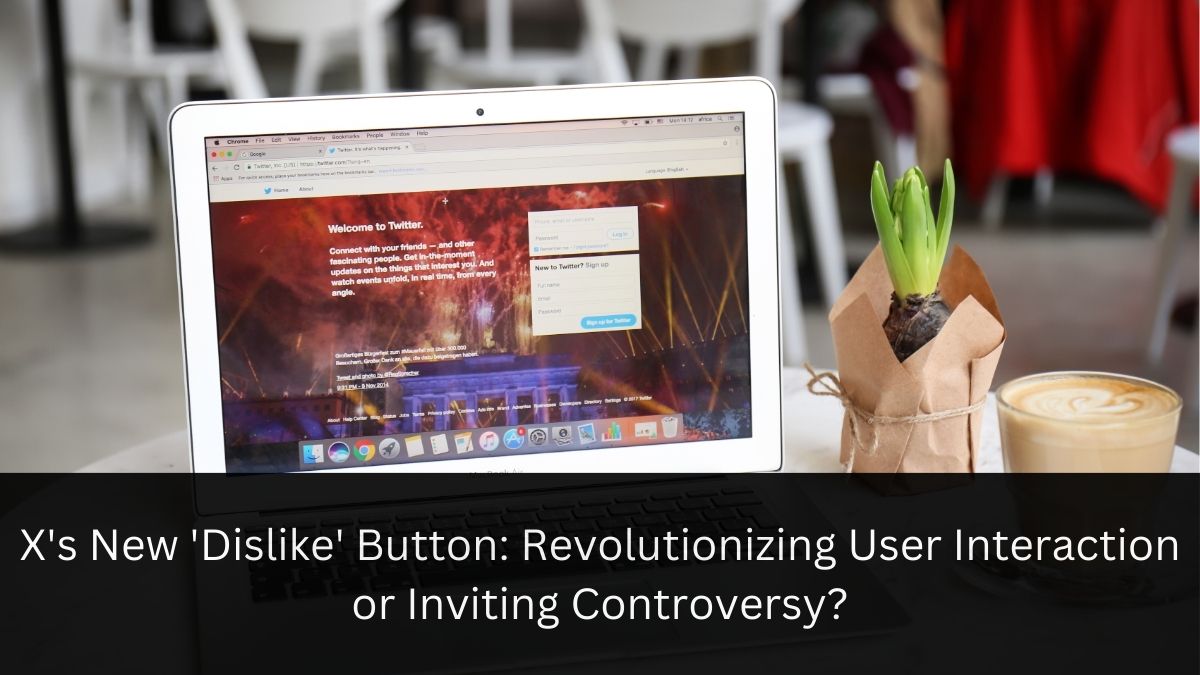Press Release
X’s New ‘Dislike’ Button: Revolutionizing User Interaction or Inviting Controversy?

In the ever-evolving landscape of social media, X (formerly Twitter) is making waves with its latest feature development. The platform, now under Elon Musk’s leadership, is reportedly working on a ‘dislike’ button that could fundamentally change how users interact with content. This move has sparked discussions about user engagement, content moderation, and the future of social media interactions.
The Evolution of X’s Feedback System
From Twitter to X: A Brief History
Twitter, now rebranded as X, has long been a pioneer in social media interaction. The platform’s iconic ‘like’ button, represented by a heart icon, has been a staple of user engagement for years. However, as social media evolves, so too must its features.
The 2021 Experiment
Back in 2021, before Elon Musk’s acquisition, Twitter conducted an experiment with both upvoting and downvoting buttons. This test was applied across all posts, giving users a more nuanced way to express their opinions on content. The experiment was short-lived but provided valuable insights into user behavior and content ranking.
The New ‘Dislike’ Button: What We Know
A Broken Heart for Broken Expectations
Recent findings by reverse engineer Aaron Perris (@aaronp613 on X) have shed light on the new feature’s design. Code references in X’s iOS app suggest that the ‘dislike’ button may take the form of a broken heart icon, positioned next to the traditional heart-shaped ‘like’ button. This visual dichotomy could offer users a quick and intuitive way to express disapproval or disagreement.
Targeted Implementation
Unlike the 2021 experiment, current indications suggest that X is focusing on implementing the ‘dislike’ button primarily for replies. This targeted approach aims to improve the ranking of responses in long threads, potentially pushing higher-quality content to the top while relegating less popular replies further down.
User Confirmation Process
Interestingly, the code also reveals a user confirmation step for downvotes. Strings of text like “Do you want to downvote this post?” and “Downvote this post” suggest that X is implementing a safeguard against accidental or hasty dislikes. This additional step could encourage users to think twice before expressing disapproval, potentially reducing impulsive negative feedback.
Potential Impacts and Implications
Combating Engagement Bait
One of the primary goals of this feature appears to be discouraging content designed solely to provoke negative reactions. By implementing a dislike button, X could potentially reduce the visibility of posts that are intentionally controversial or inflammatory, as these would likely receive more dislikes and be pushed down in reply threads.
Improving Content Quality
The dislike button could serve as a powerful tool for community moderation. High-quality, thoughtful responses might rise to the top of threads, while low-effort or offensive replies could be effectively buried. This system could incentivize users to contribute more meaningfully to discussions.
Psychological Considerations
However, the introduction of a dislike button raises questions about user psychology and online behavior. Will the ability to express disapproval so easily lead to more negativity on the platform? Or will it provide a necessary outlet for users to voice disagreement without resorting to hostile comments?
User Reactions and Early Sightings
The X community has been abuzz with speculation and early sightings of the dislike button. User @P4mui on X shared videos of the feature in action, noting that it was currently limited to replies. This real-world testing suggests that X is in the advanced stages of developing this feature.
An interesting anecdote emerged when an X employee accidentally revealed the dislike button in a video demo of a new reply expansion feature. The swift deletion and reposting of the video without the button in view only fueled further speculation about the feature’s imminent release.
Broader Changes to X’s Engagement Metrics
Hidden Likes: A Parallel Development
Alongside the dislike button, X has recently implemented changes to how likes are displayed. Under Musk’s direction, the platform began hiding like counts from public view. Musk justified this move as a way to allow users to engage with “edgy” content without fear of public judgment.
This change, coupled with the potential introduction of dislikes, represents a significant shift in how X approaches user engagement and content visibility.
The Future of Social Media Interaction
As X continues to develop and test these new features, it raises broader questions about the future of social media interactions. Are we moving towards a more nuanced system of feedback, or is this a step towards increased polarization?
Other platforms will undoubtedly be watching closely to see how X’s experiment unfolds. The success or failure of the dislike button could influence the direction of social media development across the industry.
The introduction of a dislike button on X is a bold move that could reshape online discourse. While it has the potential to improve content quality and provide users with more expressive options, it also risks introducing new forms of negativity and conflict.
As users, we must consider how we will use such a feature responsibly. Will we leverage it to promote thoughtful discussion, or will it become a tool for digital mob mentality?
Only time will tell how this feature will impact the X ecosystem. One thing is certain: the way we interact on social media is evolving, and we all have a role to play in shaping its future.
What are your thoughts on X’s potential dislike button? How do you think it will affect your social media experience? Join the conversation and let your voice be heard in this evolving digital landscape.
